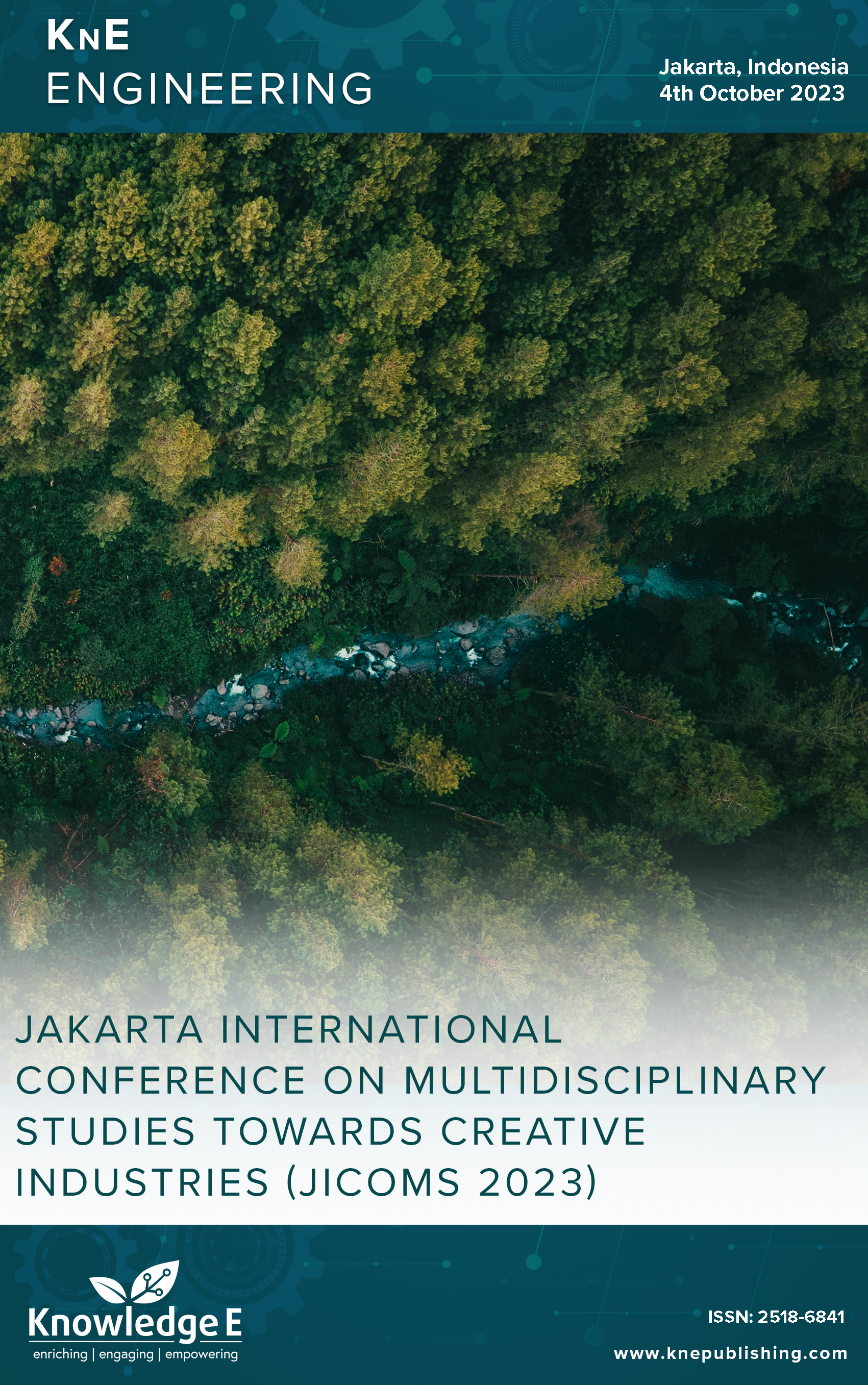Development of Basic Housekeeping Virtual Reality Learning Module For Students
DOI:
https://doi.org/10.18502/keg.v6i1.15452Abstract
The Virtual Reality (VR) Basic Housekeeping Module helps students to gain and experience practical experience even though they are studying from home. Polimedia as a vocational campus that prioritizes practice in transferring knowledge to students must look for new methods so that students continue to gain knowledge. The VR learning module development method that the author uses is the Waterfall SDLC (System Development Life Cycle ) method. The system design stages in this research are explained through process design using cases and sequence diagrams. In the design, the results are in the form of a VR application. Testing the system interface was declared good based on an assessment using 3 aspects (usability aspects, user aspects and interaction aspects).
Keywords: virtual reality, housekeeping, education, new media, interactive
References
[2] Bensalem E. “The Impact of Whatsapp on EFL Students’ Vocabulary Learning”. Arab World English Journal. AWEJ; 2018.
[3] Bozkurt A. dan M. Bozkaya,“Evaluation Criteria for Interactive E-Book fo Open and Distance Learning”. International review of Research in Open and Distributed Learning, vol. 16, no. 5, pp. 58-83. 2015.
[4] S . Handani, W. Suyanto, M., dan A.F. Sofyan,“Penerapan konsep gamifikasi pada e-learning untuk pembelajaran animasi 3 dimensi”. Telematika, vol. 9, no. 1, 2016.
[5] Heilbrunn B, Herzig P. dan A. Schill,“Gamification Analytics - Methods and Tools for Monitoring and Adapting Gamification Designs. Switzerland: Springer Interna”. 2016.
[6] Holland AA. Effective principles of informal online learning design: A theorybuilding metasynthesis of qualitative research. Comput Educ. 2016.
[7] Juul J. “The game, the player, the world: Looking for a heart of gameness”. Dalam Proceedings of Level Up: Digital Games Research Conference, pp. 30—45. 2003.
[8] Kim S, Song K, Lockee B. dan J. Burton,“Gamification in Learning and Education: Enjoy Learning Like Gaming. Switzerland: Springer International Publishing”.2018.
[9] Lee JJ, Hammer J. J,“Gamification in education: What, how, why bother? Acad. Exch. Q. 152”, doi.http://www.jesperjuul.net/text/gameplayerworld. 2011
[10] Nugroho A. Rekayasa Perangkat Lunak Menggunakan UML dan Java. Yogyakarta: Penerbit Andi; 2009.
[11] Rizqiyah H. Pengembangan Media Kuis Interaktif Berbasis Wondershare Quiz Creator Untuk Kemahiran Qira’ah dan Kitabah Siswa Kelas XI Madrasah Aliyah. Skripsi. Jurusan Sastra Arab-Fakultas Sastra UM; 2009.
[12] Rahardja U, Aini Q, Santoso NP. Q., Aini, Q, dan N. P. L,“Pengintegrasian YII Framework Berbasis API pada Sistem Penilaian Absensi. SISFOTENIKA. 2018;8(2):140–52.
[13] Sangosoko S. “Media Interaktif Bahasa Inggris untuk Siswa Sekolah Dasar Kelas II”, Jurnal Seminar Riset Unggulan Nasional Informatika dan Komputer FTI UNSA 2014. Vol. 2, No. 1, pp. 23-27. 2014.
[14] Yuhdi dan A. Amalia,“Desain Media Pembelajaran Berbasis Daring Memanfaatkan PortalSchoology pada Pembelajaran Apresiasi Sastra. Basastra”, vol. 7, no. 1, pp. 14-22.2018.
[15] P. Roger S. Software Engineering : A Practitioner’s Approach. New York: McGraw-Hill; 2010.


